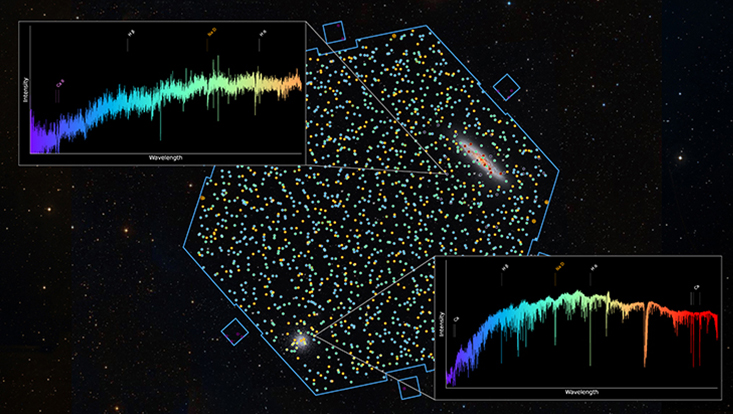and Natural Sciences
On the way to robust quantum computers
26 July 2019, by Heiko Fuchs

Photo: UHH/MIN/Kim/Wiesendanger
Researchers at the University of Hamburg have for the first time detected Majorana states at the edges of iron islands on superconducting rhenium. Majoranas are exotic quasiparticles and are regarded as promising quantum bits for future quantum computers. The results have now been published in the journal "Science Advances".
The development of quantum computers is the major goal of industrial and university research efforts worldwide. The main problem in the realization of a quantum computer is the sensitivity of quantum states to external perturbations. Majorana quasiparticles have raised great hopes for the future of quantum computers since they are robust against disturbing influences from the environment in contrast to other kinds of quantum bits.
Last year, the Hamburg research group headed by Prof. Dr. Roland Wiesendanger had already observed Majorana states at the ends of magnetic chains of individual iron atoms on a superconducting rhenium crystal. The same team has now succeeded in directly observing Majorana states at the edges of iron islands - which are only one atomic layer high - on rhenium. The formation of an exotic superconducting state was observed as a prerequisite for the formation of Majorana states. The experimental results could be explained and interpreted by a theoretical study carried out simultaneously by researchers from Hamburg and Chicago.
The coupling of Majorana edge states on atomic islands and Majorana end states in atomic chains can be used to realize elementary building blocks for memory and logic operations of a quantum computer. The demonstration of basic computational operations based on Majorana states is now the next major goal of the Hamburg researchers on their way to a robust quantum computer.
Original Publikation:
A. Palacio-Morales, E. Mascot, S. Cocklin, H. Kim, S. Rachel, D. K. Morr, and R. Wiesendanger,
Atomic-scale interface engineering of Majorana edge modes in a 2D magnet-superconductor hybrid system,
Science Advances 5, eaav6600 (2019).
DOI: 10.1126/sciadv.aav6600


